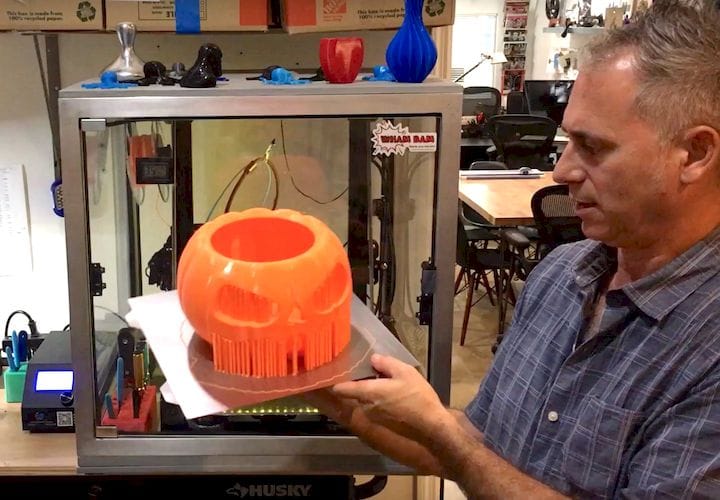![Using the Wham Bam flexible build plate system [Source: Wham Bam]](https://fabbaloo.com/wp-content/uploads/2020/05/image-asset_img_5eb0a36e1c997.jpg)
A new bed adhesion system is about to be released from startup Wham Bam.
Bed adhesion is one of the most challenging issues encountered with any filament-based 3D printer, as the first layer must adhere properly, else the print will surely fail.
This has been an issue for as long as I’ve used 3D printers, and has been addressed in various ways by many companies. Even Stratasys, the inventors of the technology, occasionally have issues with bed adhesion with their sophisticated plate/sheet systems.
Some manufacturers of 3D printers have now incorporated bed adhesion solutions directly into their products. For example, both Prusa and Sindoh have incorporated a magnetically attached, spring steel, PEI-coated sheet to their most recent 3D printers. These are terrific adhesion solutions, as print removal is simply accomplished by twisting the plate and the print pops off.
Unfortunately, not all filament 3D printers include such a solution. Many have a plain glass or even acrylic bed, or a non-removable adhesion surface. In the latter case, adhesion works until something sticks too much, and then you’re likely going to damage the machine while attempting to tear off the print in a rage.
For 3D printers that don’t include a proper adhesion system, it is possible to purchase an add-on that provides this type of solution. There are many to choose from, and now there’s one more from startup Wham Bam.
![Good first layer 3D print adhesion on this build plate [Source: Wham Bam]](https://fabbaloo.com/wp-content/uploads/2020/05/image-asset_img_5eb0a36e5125a.jpg)
Their new system, called the “Flexible Build System”, includes a magnetic base to which the spring steel plate is attached. The plate itself is covered in PEX (cross-linked polyethylene), unlike the much more common PEI material in other adhesion systems. This should operate similarly to manufacturer-installed adhesion systems.
The idea here is to upgrade an inexpensive desktop 3D printer to include this adhesion system. I think this could be best used on any of the numerous inexpensive Asian 3D printers that are now flooding the market, as most of them have poor adhesion systems.
But how much does it cost to do so, and does it fit in all machines?
It turns out that Wham Bam is providing six different sizes of adhesion plates, all having a square configuration. Sizes include: 165mm, 220mm, 235mm, 310mm, 410mm and 510mm, with prices ranging from only US$33 up to US$209. They do plan to offer additional sizes in the future. For now, they plan to launch the product on a Kickstarter. This product is of such a low cost that the normal risks of engaging with a startup’s Kickstarter launch are not really in effect here, but you may want to review our checklist in any case.
![What’s included in the Flexible Build Plate system [Source: Wham Bam]](https://fabbaloo.com/wp-content/uploads/2020/05/image-asset_img_5eb0a36e7ee1d.jpg)
If you have a poorly equipped 3D printer, this could be a good option. I’ve found that hopping up the adhesion system on a 3D printer can transform a poorly performing device into something far more reliable.
I do have some thoughts about the company behind this product, however. In the past there were several companies addressing the market, but now there seems to be fewer. In speaking with one of the defunct companies, it seemed that there was not a lot of money to be had in this particular business. Another solution provider is now adding additional products to their offering in an attempt to diversify.
Even worse, more and more 3D printers are including proper adhesion solutions directly into their products, generally decreasing the need for this type of third party solution.
Therefore I am quite interested to see how Wham Bam proceeds in this market. Will they find enough market in the thousands of new inexpensive Asian machines? Or will they be swamped by manufacturers providing their own in-house solutions?
Via Wham Bam











